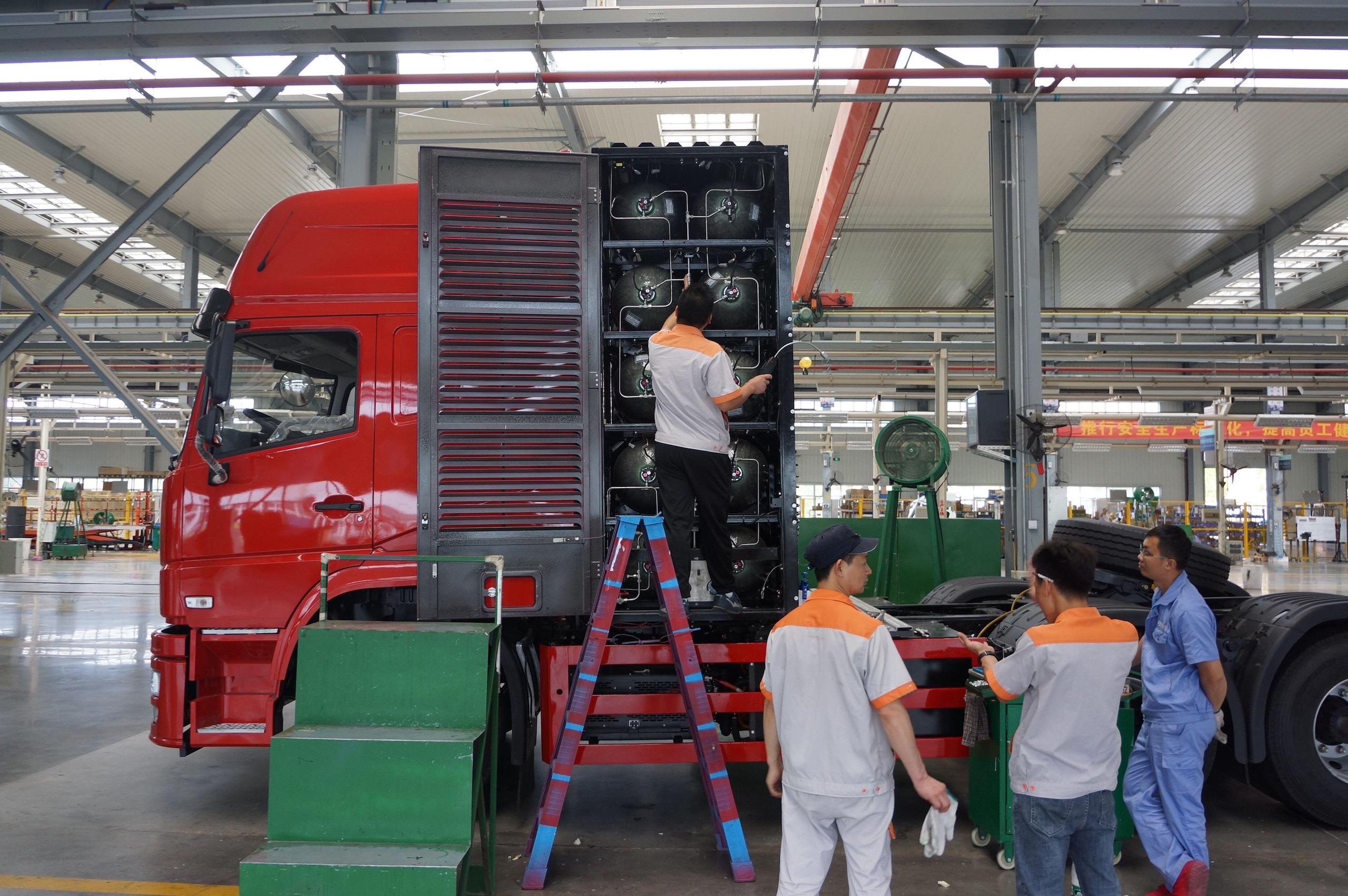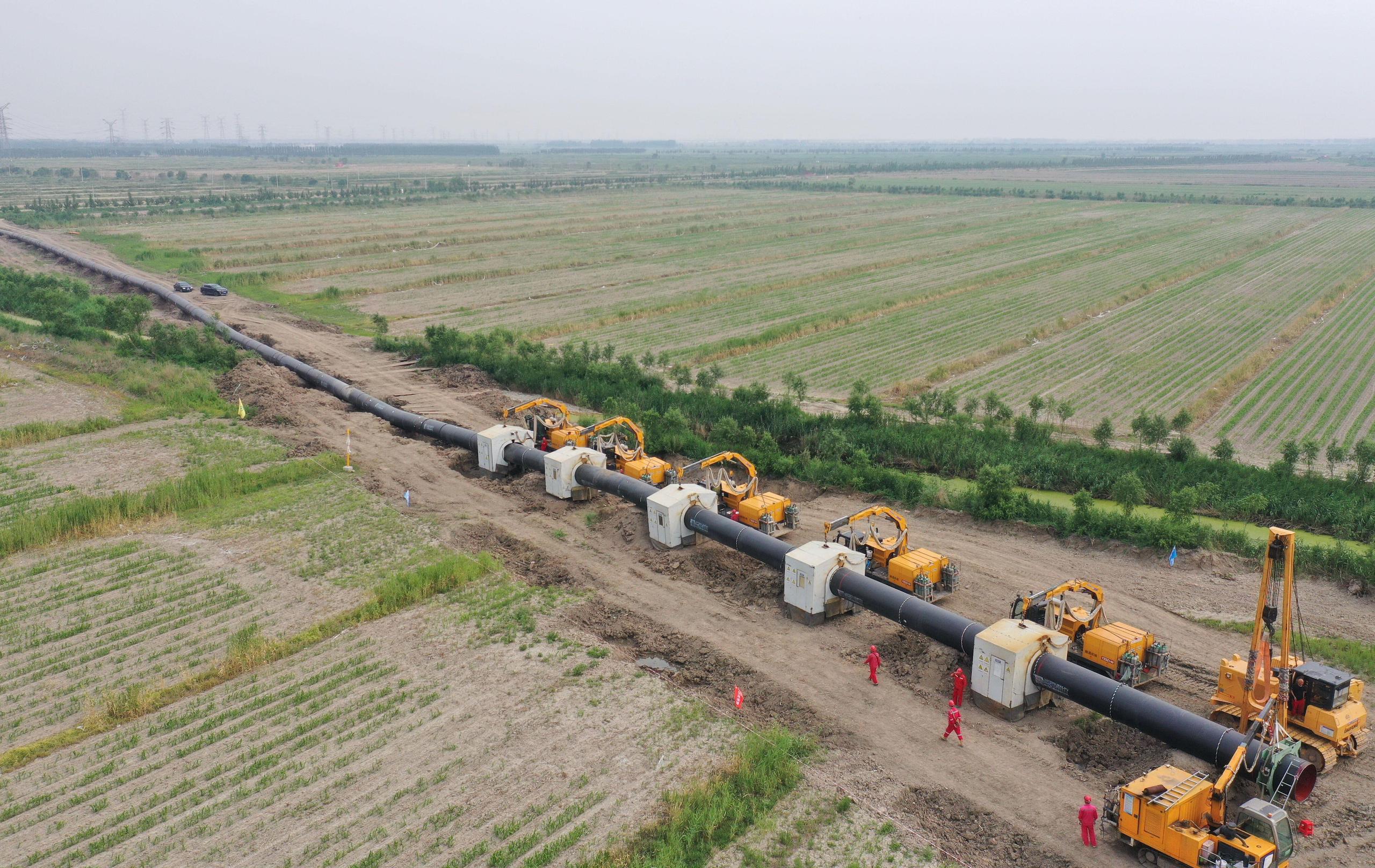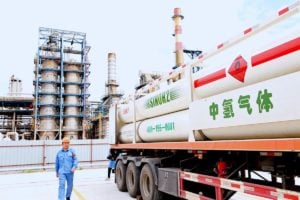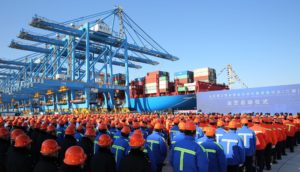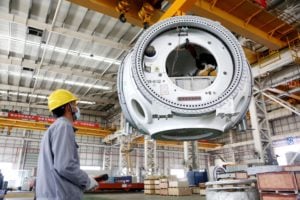In April, state-owned oil and gas conglomerate PetroChina developed a pilot programme for a new 397km pipeline in Ningxia, north-central China, to transport hydrogen blended with natural gas. New technologies and materials in it minimise hydrogen loss and raise the threshold of hydrogen’s share from under 20% to 24%. After several months of design testing, the pipeline is expected to be operational by the end of this year.
Such improvements are necessary if hydrogen is to be developed at commercial scale. Because of the gas’s low density, and flammable and explosive nature, storage and transportation account for nearly half its costs in today’s energy sector.
Numerous Chinese media outlets have reported on the potential of hydrogen-blended gas pipelines like the one in Ningxia to revolutionise hydrogen transportation, citing the possibility of upgrading China’s extensive natural gas pipeline network. Making green hydrogen transport cheaper could represent a critical move towards promoting widespread adoption of green hydrogen, the outlets say, helping China attain its target of reaching net-zero greenhouse gas emissions before 2060.
Nonetheless, the path to widespread utilisation of blended gas pipelines to transport green hydrogen faces obstacles. The cost of hydrogen in blended gas and complexity of these pipelines is a key concern. Recent research studies have also drawn into question to what extent blended hydrogen really reduces CO2 emissions when compared to natural gas.
Hydrogen’s rising importance to China’s energy transition
Recognised for its clean combustion and higher energy density than other energy sources on a mass basis, hydrogen has the potential to be a clean alternative to fossil fuels in various sectors. These include transportation, energy storage and difficult-to-abate industrial processes such as iron and steel production. In 2021, global consumption of hydrogen reached 94 million tonnes, with China accounting for the largest share – 30%, or 28 million tonnes.
In 2022, China unveiled a blueprint for developing its hydrogen industry up to 2035. This important document underscores the position of the gas as a “strategic emerging industry” and its pivotal role in the low-carbon transition. The plan lays out ambitious targets. By 2025, China aims to operate around 50,000 fuel cell vehicles and expects its annual hydrogen production capacity, using renewable energy, to reach between 100,000 and 200,000 tonnes. Achieving these targets will reduce CO2 emissions by 1 to 2 million tonnes annually, the plan estimates.
To be a cleaner alternative to fossil fuels, hydrogen can be produced in two ways. “Blue” hydrogen is made using fossil fuels and carbon capture and storage (CCS) technology for resulting emissions. While “green” hydrogen uses renewable energy to split water into hydrogen and oxygen, in a process known as electrolysis. With the decreasing costs of renewable power sources and electrolysers, and high costs linked to CCS, green hydrogen is increasingly seen as the cheaper and more sustainable option in China. As a result, it features more prominently than the blue kind in the national hydrogen plan.
China’s western provinces boast more abundant and affordable renewable power, but a significant portion of hydrogen demand is concentrated in the more developed eastern provinces. Unfortunately, due to hydrogen’s lightweight and flammable nature, such long-distance transportation is costly and complex, impeding commercialisation of the gas.
Benefits of blending hydrogen
The development of hydrogen-only pipelines is still in its early stages in China. There are currently 400km of dedicated pipelines, 300km of which are still under construction or being tested. For comparison, the US has about 2,600km, and Europe 2,000km.
Blending hydrogen with natural gas and transporting it through natural gas pipelines offers two main advantages. Studies from research institutes in China and Europe suggest that it can be more cost-effective than other modes of transport such as trucking, especially over long distances and when large volumes are involved. This is pertinent for China given the geographical mismatch between its green hydrogen production centres and major economic hubs. Secondly, China’s vast existing network of pipelines can be used. In 2021, its natural gas network spanned over 116,000km, ranking third in the world. By 2025, it is expected to reach 163,000km. Thus, blending and piping has the potential to significantly reduce the cost of green hydrogen transportation and promote its widespread use.
Upgrading the existing natural gas pipeline network for large-scale cross-provincial hydrogen transportation could also bolster China’s energy security. The country’s reliance on imported natural gas to meet its consumption needs has increased notably, reaching approximately 40% in 2022, according to state media analysis from that year. Blending hydrogen with natural gas can alleviate China’s natural gas supply strain and foster a move towards greater energy self-sufficiency.
Many obstacles ahead
Nevertheless, several challenges and uncertainties need to be resolved before hydrogen transportation via blended gas pipelines can and should achieve wider adoption.
One significant challenge arises from the small size of hydrogen molecules, which enables them to permeate solid metals. This phenomenon, known as hydrogen embrittlement, can damage pipelines and increase the risk of explosions. The likelihood of embrittlement escalates with higher in-pipeline pressure (when transporting larger amount of gas) and a higher blended hydrogen ratio. Addressing this issue requires the use of specialised materials in pipeline construction.
The pilot project carried out by PetroChina in Ningxia employs a new pipeline capable of transporting higher hydrogen blends. Replicating such projects on a national scale requires further research as well as considerations such as in-pipeline pressure and construction. While upgrading existing pipelines with the appropriate materials will incur additional costs. Energy experts abroad are cautious about the risks of hydrogen blending. The National Renewable Energy Laboratory (NREL) in the US, for instance, maintains a conservative approach, citing limited understanding of hydrogen embrittlement, and advocates for case-by-case evaluations of hydrogen-blending projects. Conducting comprehensive investigations and assessments is key to ensuring the compatibility and safety of hydrogen transportation within existing pipeline infrastructure.
Second, as hydrogen blending and transportation in natural gas pipelines is still a nascent technology, standardised regulations of such pipelines are lacking. The allowable hydrogen blending ratios in natural gas vary between countries. According to 2019 data from the International Energy Agency, many countries restrict the highest allowable blend to less than 6% hydrogen due to safety concerns. Notably, while China has over 90 national standards related to hydrogen production, none specifically address the blending limit of hydrogen-added natural gas. Given the advancement and gradual adoption of hydrogen-blended natural gas technology worldwide, there is an urgent need to establish corresponding standards to promote and regulate its safe application.
The market appeal of hydrogen-blended natural gas could face limitations due to its cost implications. While hydrogen is one of the most energy-dense fuel gases by weight, its low density leads to low energy content on a volume basis. Hydrogen has a heating value one-third of the same volume of natural gas. Consequently, when blended with natural gas, the resulting mixture may deliver less energy per cubic metre than pure natural gas, a crucial factor that will push up gas prices as gas sales are usually metered in volume terms.
Another aspect affecting costs is the uncertainty surrounding the potential applications of hydrogen-blended natural gas downstream. Blended gas can either be utilised by extracting hydrogen for purification or by direct use of the blended version. Extraction is crucial in applications requiring high-purity hydrogen, such as fuel cell vehicles, but it introduces additional costs that can hinder the competitiveness of these already-expensive vehicles. Meanwhile, direct use of blended gas is possible in many industrial processes. It requires the development of hydrogen-enriched combustion appliances, industrial boilers, and gas turbines capable of accommodating different hydrogen-blending ratios.
Emission reduction or not really?
Perhaps a more fundamental question about PetroChina’s hydrogen-blending breakthrough is will it truly contribute to emission reductions? The debate on the potential emission benefits of hydrogen-blended natural gas is far from settled.
The Electric Power Research Institute, a California-based research nonprofit, has documented the emission benefits of some hydrogen-blending pilot projects. For instance, during various tests, burning a 25% hydrogen mix resulted in only around a 10% reduction in CO2 emissions compared to burning pure natural gas. Another test conducted at a gas-fired power station in New York demonstrated a 14% reduction in carbon emissions when using a blend with 35% hydrogen. That is less than ideal.
Organisations like IRENA (the International Renewable Energy Agency) caution against optimism on integrating hydrogen into existing natural gas networks so as to reduce emissions. IRENA warns that while it may be physically feasible to blend up to 20% hydrogen (by volume) into gas grids without extensive infrastructure changes, the actual emission reduction from a 20% blend is merely 7%, and is accompanied by a significant increase in energy costs.
In fact, integrating green hydrogen into networks could result in emissions-abatement costs of over US$500 per tonne of CO2. This surpasses estimates for carbon capture costs in industrial processes like power generation and cement by a factor of five, according to data from the International Energy Agency.
Despite the challenges, green hydrogen can still have a promising role to play in China’s path to peaking emissions by 2030 and achieving net zero before 2060, and there is growing attention and enthusiasm surrounding new hydrogen-blending pilot projects. But their success hinges on several factors that require careful consideration from China’s policymakers. These include: extensive research into new pipeline materials; blending ratios appropriate to the idiosyncrasies of existing pipelines; establishing standardised regulations for pipeline safety; assessing market appeal; and, most importantly, evaluating actual emissions reduction potential.
With the right mix of appropriate policies and incentives, China has the potential to replicate its success in solar and wind energy and emerge as a global leader in green hydrogen. To achieve this, it is vital for energy researchers and policymakers to continue addressing the challenges and questions around hydrogen blending.

